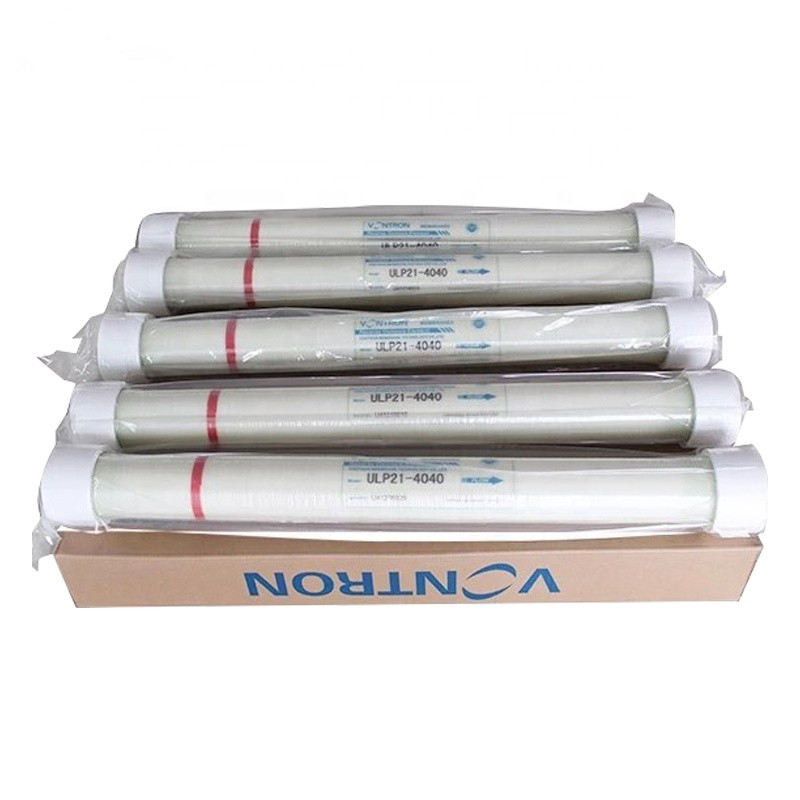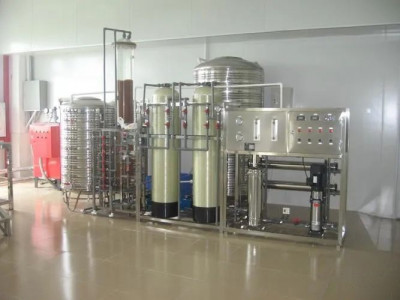Have you ever wondered how the water we drink every day is actually purified? In water purification, reverse osmosis membrane plays a very important role. So, do you know the difference between low-pressure reverse osmosis membrane and high-pressure reverse osmosis membrane? Hurry to find out! First of all, let’s first understand the principle of reverse osmosis membrane. Reverse osmosis membrane is a kind of artificial polymer material, it can filter water ions, molecules and microorganisms and other impurities, so as to achieve the purpose of purification. When pressure is applied at both ends of the membrane, water will flow from the high concentration side to the low concentration side, which is the principle of reverse osmosis.
November 6, 2023

So what exactly is the difference between a low pressure reverse osmosis membrane and a high pressure reverse osmosis membrane?
Reverse osmosis membrane is one of the important innovations of modern technology, which can filter impurities in the water and purify the water quality, providing a better guarantee for the water in life. And when it comes to choosing reverse osmosis membranes, they are generally divided into two main categories: high-pressure reverse osmosis membranes and low-pressure reverse osmosis membranes. So, how to choose the right reverse osmosis membrane?
There is a big difference between high pressure reverse osmosis membranes and low pressure reverse osmosis membranes. The most obvious feature of high pressure reverse osmosis membranes is that they require a pump to raise the water pressure to 200-400psi in order to work properly. Low pressure reverse osmosis membranes, on the other hand, operate at lower pressures, typically between 30-60psi. As a result, low pressure reverse osmosis membranes consume less energy, cost less to maintain, and are less difficult to operate than high pressure reverse osmosis membranes. In addition, high-pressure reverse osmosis membranes and low-pressure reverse osmosis membranes differ in their water treatment effects. As the high-pressure reverse osmosis membrane on the water quality requirements are higher, on the hardness, PH value and bacteria and other aspects have certain requirements, in order to achieve better water treatment effect. While low-pressure reverse osmosis membrane has lower requirements for water quality due to low operating difficulty, so it can achieve good treatment effect when the requirements for water quality are not high.
In practice, if your water quality is poor, you have high requirements in water treatment (such as purifying seawater), or you need to deal with a large amount of water resources, then high-pressure reverse osmosis membrane will be a more reliable choice. This is because high-pressure reverse osmosis membranes are more effective at filtration and contain fewer impurities.
On the contrary, if you have good water quality, do not require high quality water, and want to save the trouble of operation and maintenance, then low pressure reverse osmosis membrane will be the best choice.

The advantage of low-pressure reverse osmosis membranes is that they produce a higher volume of water while working at a lower pressure, making them more energy efficient. However, it has the disadvantages of a relatively high wastewater ratio and poor removal of dissolved organic matter from the water. High-pressure reverse osmosis membrane can overcome these shortcomings, it can produce a higher water flux, while the removal of dissolved organic matter in the water is also better. However, due to the high working pressure, the energy consumption of high-pressure reverse osmosis membrane is relatively high.
In practice, high-pressure reverse osmosis membrane is more suitable for treating water containing large amounts of organic matter and impurities. For example, in some areas with poor water quality, high-pressure reverse osmosis membrane can effectively filter harmful substances in the water, providing purer drinking water.
In addition, high-pressure reverse osmosis membrane is also widely used in seawater desalination, industrial wastewater treatment and other fields. When choosing between low-pressure reverse osmosis membranes and high-pressure reverse osmosis membranes, we need to consider different application scenarios and needs. Low-pressure reverse osmosis membrane is suitable for the treatment of water with less suspended substances, water quality is good, because of its relatively low operating pressure, more suitable for energy saving and environmental protection needs.
High-pressure reverse osmosis membranes, on the other hand, are suitable for treating water with more suspended solids and dissolved solids, and their higher operating pressure can effectively remove dissolved substances and microorganisms. Choosing the right reverse osmosis membrane also takes into account factors such as water quality, the cost of the water source and the effectiveness of water treatment.
Therefore, when selecting low-pressure and high-pressure reverse osmosis membranes, we should evaluate and select them according to the specific situation. This will ensure efficient, energy-saving and sustainable results in the water treatment process. In conclusion, low-pressure reverse osmosis membranes and high-pressure reverse osmosis membranes have their own advantages and disadvantages, and the choice of which type of reverse osmosis membrane to use needs to be based on the actual application scenario. No matter which type of reverse osmosis membrane you choose, the ultimate goal of using reverse osmosis membranes is to protect the safety of our living water and improve our quality of life.

How to Choose the Right Pure Water Treatment Equipment for Your Needs?
November 10, 2025
How to Choose the Right Pure Water Treatment Equipment for Your Needs? (by ROAGUA – Professional Water Treatment Equipment Manufacturer, China)



